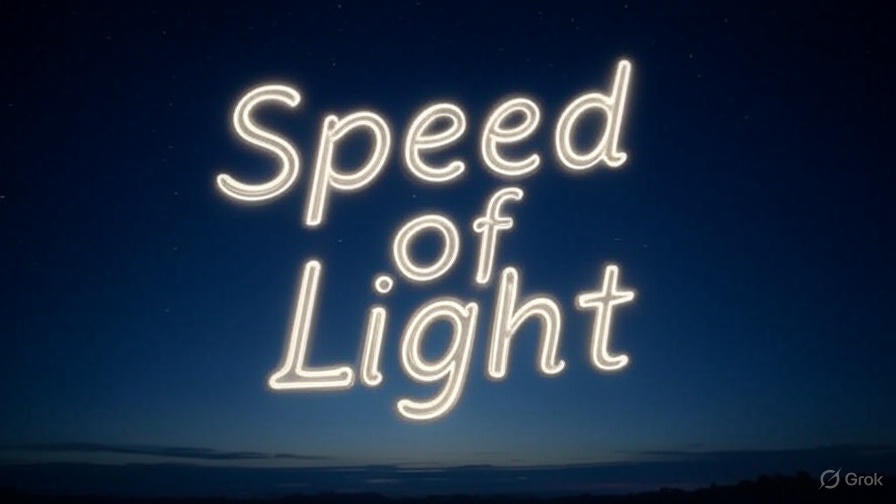Decoding the Speed of Light: A Deep Dive into the Viral Experiment
Introduction
A recent viral video has sparked widespread interest by purportedly demonstrating the speed of electricity. However, upon closer examination, the footage actually showcases the speed of light, not electricity. This article delves into the details of the experiment, the technology behind it, and the scientific principles at play.
These guys conduct an experiment that shows the speed of electricity. pic.twitter.com/riL7jFJSqt
— Dudes Posting Their W’s (@DudespostingWs) September 26, 2025
Understanding the Experiment
The Setup
The video features two individuals in lab coats, one holding a microphone and the other a container with wires. The background includes scientific drawings and the text "SPEED OF LIGHT." The experiment is captured using ultra-high-speed cameras, allowing viewers to witness phenomena that occur too rapidly for the naked eye.
The Process
The experiment begins with a countdown, followed by the ignition of gas or another medium. The high-speed cameras capture the propagation of light and the ignition process in stunning detail. At 8,300 frames per second, the movement of light appears in slow motion, providing a visual representation of its speed.
The Science Behind the Speed
Speed of Light vs. Speed of Electricity
It's crucial to distinguish between the speed of light and the speed of electricity. The speed of light in a vacuum is approximately 299,792 kilometers per second, while the speed of electricity depends on the medium and the type of current. In the experiment, the observed phenomena are related to the speed of light, not electricity.
High-Speed Imaging Technology
The use of high-speed cameras, capable of capturing thousands of frames per second, enables scientists to visualize events that occur in fractions of a second. This technology is instrumental in studying fast-moving phenomena like light propagation.
FAQs
Q1: Why does the video appear to show light moving slowly?
The high frame rate of the camera captures rapid events in minute detail, creating a slow-motion effect that allows viewers to observe the movement of light.
Q2: Can we actually see light move with the naked eye?
No, light travels too fast for the human eye to perceive its motion. High-speed cameras make this possible by recording events at extremely high frame rates.
Q3: Is this experiment widely used in scientific research?
Yes, high-speed imaging is a valuable tool in scientific research, allowing for the study of rapid phenomena in various fields, including physics and engineering.
Conclusion
The viral experiment provides a fascinating glimpse into the speed of light, thanks to advancements in high-speed imaging technology. While the initial description may have been misleading, the demonstration serves as an excellent educational tool, sparking curiosity and interest in the field of physics. Understanding the science behind such experiments enhances our appreciation of the natural world and the technologies that allow us to explore it.
Opinion
While the experiment's initial portrayal may have caused some confusion, it ultimately serves as a catalyst for discussions about the fundamental principles of physics. The use of high-speed cameras to visualize light propagation is a testament to human ingenuity and our continuous quest to understand the universe. Such demonstrations not only educate but also inspire future generations to delve deeper into the sciences.


0 comments